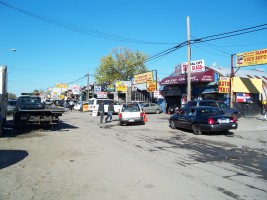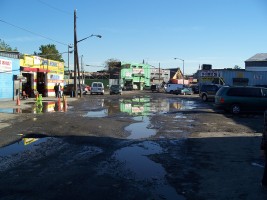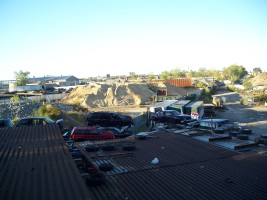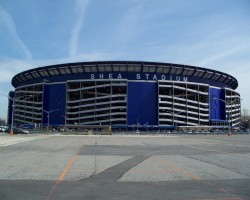Willets Point
Willets Point is a triangular-shaped neighborhood in northern Queens bordered by Roosevelt Avenue on the South, 126th Street and Citi Field on the West, Northern Boulevard / Whitestone Expressway on the North and the Van Wyck Expressway / Flushing Creek on the east.
The area was named after Willets Point Boulevard, which once ran along the western edge of Flushing Creek and over a (long demolished) bridge to a cape named Willets Point at the confluence of the East River and Long Island Sound. That older Willets Point was named after early 18th-century landowners Charles and Martha Willet and was purchased from heirs of the Willets in 1857 for what would become Fort Totten
Through the 1930s, this area on Flushing Creek, like much of eastern Queens, remained relatively rural, despite the presence of a massive ash dump just to the south on 1,200 acres that had opened in the early 20th century and was run by the Brooklyn Ash Company and Tammany politician John McCarthy. Joseph Ardizzone, who was born in Willets Point in 1933, recalled his family keeping chickens and goats on their property. Mayor LaGuardia and development czar Robert Moses got the dump closed in 1934 and it was subsequently covered with topsoil to create the fairgrounds for the 1939 World's Fair. Based on a random sampling of DOB Certificates of Occupancy for the area, Willets Point apparently started becoming the home to auto repair and scrap businesses in the early 1950s.
In the early 1960s, Robert Moses wanted to finish the job he started in 1939 and turn Willets Point into parking and parkland for the 1964 World's Fair Complex, which was being built on the old site of the 1939 Fair. However, local business owners hired a young Mario Cuomo to successfully fight the state's plan. The Ed Koch unsuccessfully tried to get a football stadium built there in the 1980s and Rudy Giuliani failed to have the area cleared for a new Mets Stadium, which ultimately got built on the parking lot between Willets Point and the existing Shea Stadium.
In the heritage of Moses and his contempt for working people, the Bloomberg Administration unveiled a plan in 2007 to evict the current inhabitants by eminent doman and transform the area into a mixed-use playground for the rich. The plan would incorporate retail and hotel space as well as a new convention center while providing recreational access to what could be a lovely waterfront.
Aside from the moral question of whether it would be right to use eminent domain to close a thriving collection of businesses and throw their (largely immigrant) empoyees out of work, the location is actually a fairly crappy place to put human beings. It sits at the confluence of major expressways and under the approach path to LaGuardia Airport. In a city with epidemic rates of asthma due to air pollution, putting any families with children in the area would not be a great idea.
In the Fall of 2008 I decided to take a walk around this much-maligned community and see what all the shouting was about. What I found was a vibrant collection of businesses operating in third-world conditions. The area is less blighted than neglected by the city, with the most obvious issue being the absence of storm sewers and maintained roads. But in spite of all that, there seemed to be no shortage of clientele for the dozens of auto repair shops. And other activites here, like recycling and school bus storage, have to be done someplace - do we think that school buses just magically come from the sky and recycling just magically gets converted into new reams of copy paper?!
It would seem to me that the approach should be, "Mend it, not end it." Put in sewers and pave the roads and NYC's psychotic real estate market will take care of the rest. But in the face of greedy, ruthless developers and a billionare mayor who almost always manages to get his way, it remains to be seen whether this rag-tag band of hardscrabble business owners can hold back yet another big-government onslaught on their way of life.





